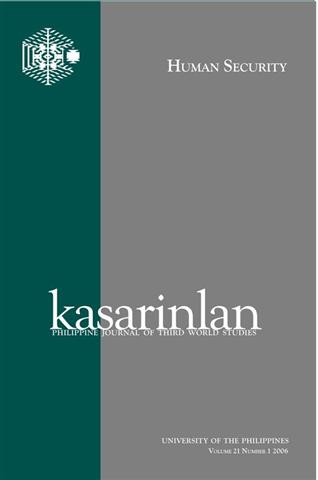The Challenges of Relief and Rehabilitation Assistance in Ongoing Conflict: A Mindanao Case
Abstract
Following an analysis of humanitarian-assistance principles and of the roots of the Mindanao conflict, this paper contrasts the relief and rehabilitation strategy of the government with civil-society efforts in building the “Space for Peace” inNalapaan, Pikit, North Cotabato. It identifies how the conflict’s dynamics and actors shape the character of relief and rehabilitation assistance, and how the dynamics of relief
and rehabilitation assistance feed the conflict or help address its roots. It also presents the potentials and limitations of relief and rehabilitation initiatives of government and civil society (in Nalapaan) in providing meaningful humanitarian assistance that
addresses the conflict’s roots and preventing the conflict from getting worse. The paper concludes by building a framework for carrying out a more meaningful relief and rehabilitation strategy in the context of the ongoing conflict in Mindanao, which puts
an emphasis on strategizing beyond disaster management, incorporating the value of local capacities and fostering meaningful partnerships among stakeholders, and addressing
the roots of the conflict and promoting a “culture of peace.”
Published
2007-11-15
How to Cite
SORIANO, Cheryll Ruth.
The Challenges of Relief and Rehabilitation Assistance in Ongoing Conflict: A Mindanao Case.
Kasarinlan: Philippine Journal of Third World Studies, [S.l.], v. 21, n. 1, p. 04-33, nov. 2007.
ISSN 2012-080X.
Available at: <https://journals.upd.edu.ph/index.php/kasarinlan/article/view/416>. Date accessed: 19 sep. 2025.
Section
Articles
Keywords
relief; rehabilitation; humanitarian assistance; Mindanao
By submitting a manuscript, the authors agree that the exclusive rights to reproduce and distribute the article have been given to the Third World Studies Center.



